Clancy Tucker's Blog, page 133
November 30, 2018
1 December 2018 - MOVING PICTURES

MOVING PICTURES
G'day folks,
Welcome to some more amazing pictures that rock and roll.











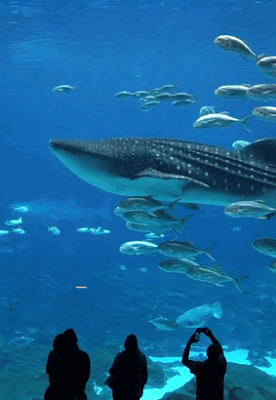

Clancy's comment: Love the camera and the fox.
I'm ...
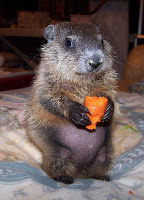

Published on November 30, 2018 13:23
November 29, 2018
30 November 2018 - GREAT QUOTES

GREAT QUOTES
G'day folks,
Welcome to some more top quotes, with a touch of humour.


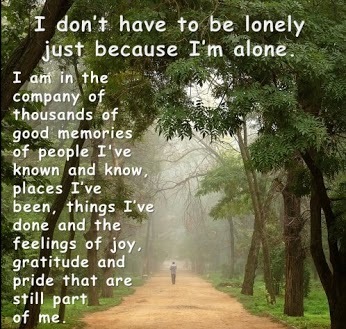
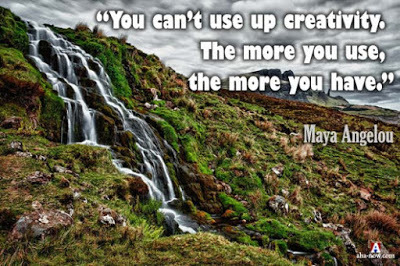
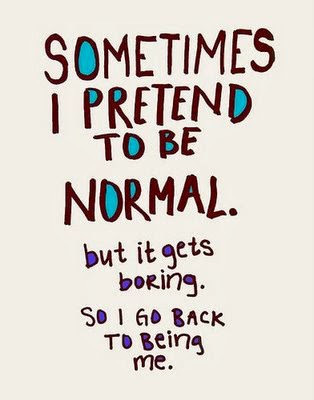
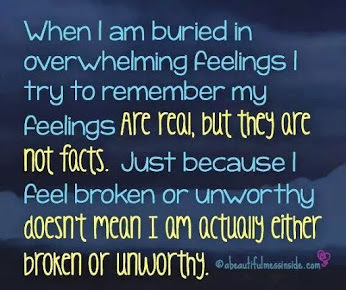
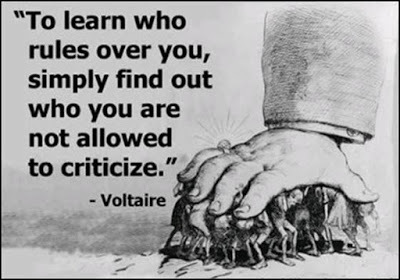
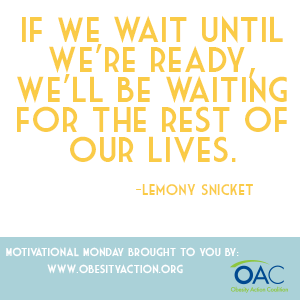
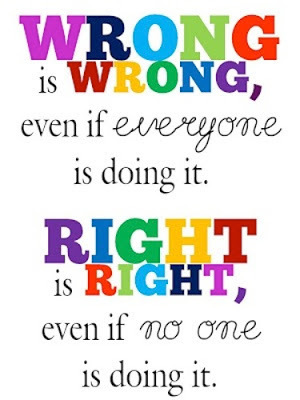







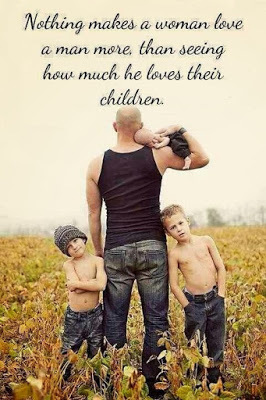

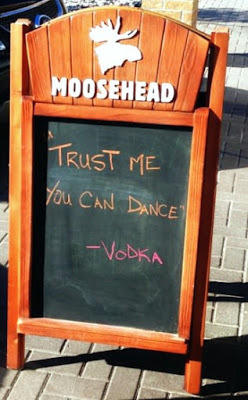




Clancy's comment: Loved the comment by Vodka.
I'm ...


Published on November 29, 2018 11:26
November 28, 2018
29 November 2018 - FABULOUS PHOTOGRAPHY
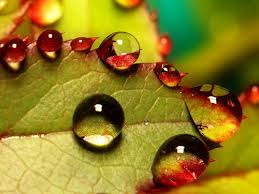
FABULOUS
PHOTOGRAPHY
G'day folks,
It's time to admire some great photography from heaps of clever photographers.


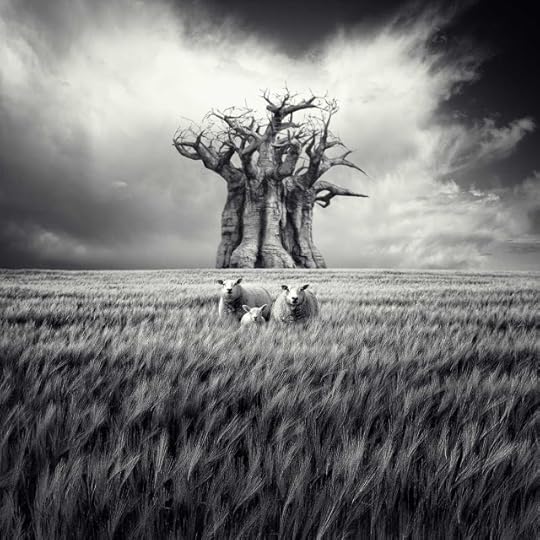




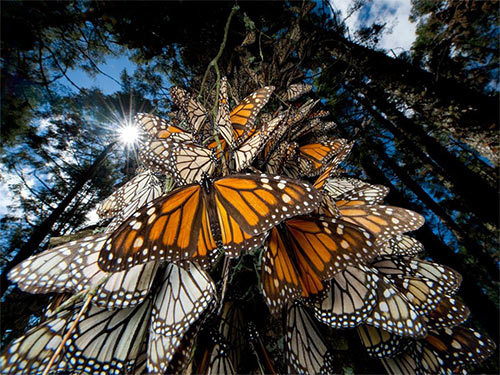

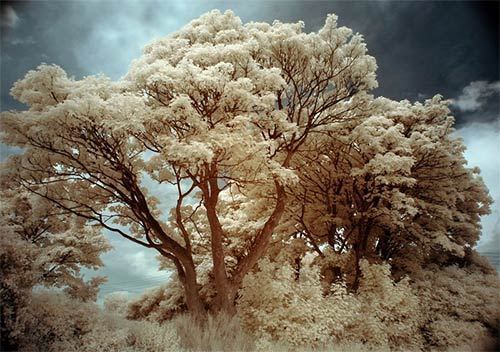


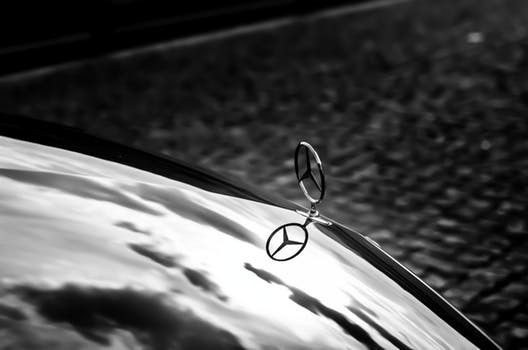
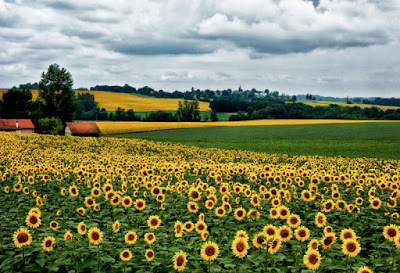
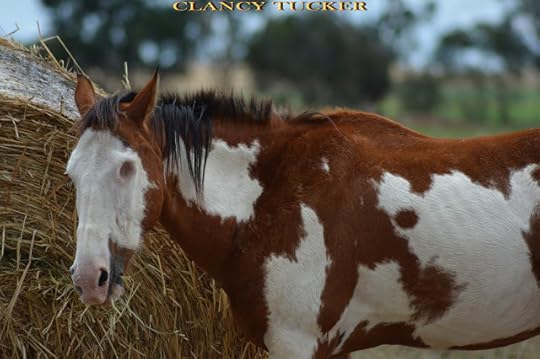
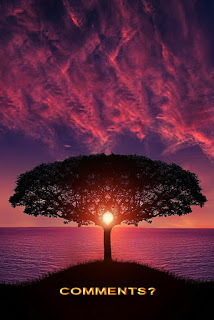
Clancy's comment: I loved the squirrel, but I guess you knew I'd say that. Did you notice the skull in the coffee cup?
I'm ...


Published on November 28, 2018 12:07
November 27, 2018
28 November 2018 - THE INFAMOUS POLECAT

THE INFAMOUS POLECAT
G'day folks,
There has been a change of attitude towards the polecat by farmers and foresters who now welcome them as they benefit from its voracious appetite for a variety of rodents and rabbits.

The European polecat – also known as the common ferret, black or forest polecat, or fitch – is a species of mustelid native to western Eurasia and north Morocco. It is of a generally dark brown colour, with a pale underbelly and a dark mask across the face.

Quick FactsType: MammalDiet: CarnivoreLifespan: 4-5 yearsSize: 35-50 cm in length (males larger than females)Weight: 0.7-1.5 kg (males heavier than females)Habitat: Lowland areas, marshes, forest plantations, wooded areas, riverbanks, sea cliffs and sand dunes.Range: Europe and Morocco.Scientific name: Mustela putorius
Amazing Facts About the PolecatThe European polecat, also known as the black or forest polecat, is a species of Mustelid native to western Eurasia and North Africa.Polecats have a thick, silky and attractive brown fur with a pale yellow underbody. Their coat moults to silvery-grey in winter for camouflage.They have distinguishable small white-trimmed ears, a white-tipped nose and a lighter bandit-like mask across the face,With a long tail and short legs they are somewhat larger than weasels but smaller than otters.It is the sole ancestor of the ferret, which was domesticated over 2000 years ago for the purpose of hunting animals classed as ‘vermin’.The male polecat is one and a half times heavier than the female. He usually takes the larger prey, leaving the smaller animals for his mate.Males are very territorial. They patrol regularly and defend their territory against other male polecats. The female ranges over a smaller area and her territory may overlap with that of another female or male.Both sexes mark territories with an oily, yellow musk, which has a pungent smell. The polecat also uses this as a defence if it is frightened or angry. While breeding, the male polecat drags the unresisting female round by the scruff of her neck for as long as an hour before mating commences. This courtship ritual encourages her to produce her eggs and usually guarantees fertilization. The pair will then mate several times during the next hour.Female polecats can give birth to as many as ten young in a nest of dry grass and moss. The female suckles her litter for a month or more and brings them small pieces of meat, which they chew and suck before they are weaned.Young polecats are about a month old before they open their eyes and they will then follow their mother out of the nest to begin exploring their surroundings. After another two months, under the watchful eye of the mother, they will learn to play, explore and hunt and are sufficiently well developed to begin to fend for themselves.The polecat was almost wiped out in Britain by gamekeepers at the end of the nineteenth century, but this solitary, night-time hunter is now making a comeback.There has been a change of attitude towards the polecat by farmers and foresters who now welcome them as they benefit from its voracious appetite for a variety of rodents and rabbits.In the past polecat fur has been sought after by hunters for the fur trade, however, public opinion has largely turned against the wearing of wild-trapped furs, seeing it as cruel.
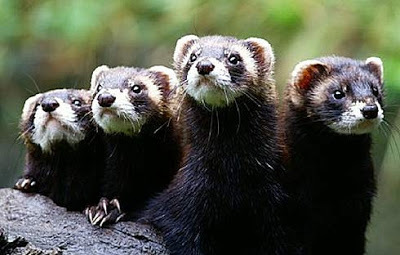
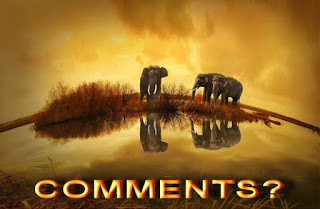
Clancy's comment: Mm ... They have pretty sharp-looking teeth, eh?
I'm ...


Published on November 27, 2018 12:16
November 26, 2018
27 November 2018 - When Americans Picnicked in Cemeteries

When Americans Picnicked in CemeteriesG'day folks,This is something different. For a time, eating and relaxing among the dead was a national pastime.
Within the iron-wrought walls of American cemeteries—beneath the shade of oak trees and tombs’ stoic penumbras—you could say many people “rest in peace.” However, not so long ago, people of the still-breathing sort gathered in graveyards to rest, and dine, in peace.
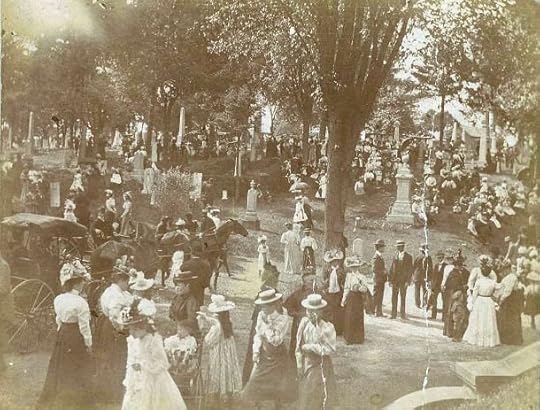
During the 19th century, and especially in its later years, snacking in cemeteries happened across the United States. It wasn’t just apple-munching alongside the winding avenues of graveyards. Since many municipalities still lacked proper recreational areas, many people had full-blown picnics in their local cemeteries. The tombstone-laden fields were the closest things, then, to modern-day public parks.
In Dayton, Ohio, for instance, Victorian-era women wielded parasols as they promenaded through mass assemblages at Woodland Cemetery, en route to luncheon on their family lots. Meanwhile, New Yorkers strolled through Saint Paul’s Churchyard in Lower Manhattan, bearing baskets filled with fruits, ginger snaps, and beef sandwiches.

One of the reasons why eating in cemeteries become a “fad,” as some reporters called it, was that epidemics were raging across the country: Yellow fever and cholera flourished, children passed away before turning 10, women died during childbirth. Death was a constant visitor for many families, and in cemeteries, people could “talk” and break bread with family and friends, both living and deceased.
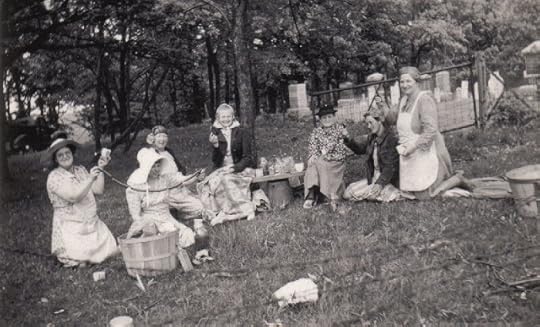
The picnic-and-relaxation trend can also be understood as the flowering of the rural cemetery movement. Whereas American and European graveyards had long been austere places on Church grounds, full of memento mori and reminders not to sin, the new cemeteries were located outside of city centers and designed like gardens for relaxation and beauty. Flower motifs replaced skulls and crossbones, and the public was welcomed to enjoy the grounds.

Eating in graveyards had, and still has, historical precedent. People picnic among the dead from Guatemalato parts of Greece, and similar traditions involving meals with ancestors are common throughout Asia. But plenty of Americans believed that picnics in local cemeteries were a “gruesome festivity.” This critique, notably from older generations, didn’t stop young adults from meeting up in graveyards. Instead it led to debate over proper conduct.In some parts of the country, such as Denver, the congregations of grave picnickers grew to such numbers that police intervention was even considered.

The cemeteries were becoming littered with garbage, which was seen as an affront to their sanctity. In one report about these messy gatherings, the author wrote, “thousands strew the grounds with sardine cans, beer bottles, and lunch boxes.”
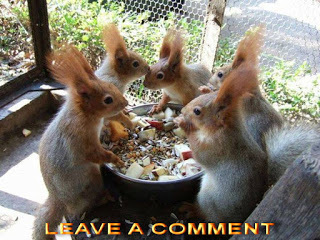
Clancy's comment: I think I'd rather dine with the squirrels above.
I'm ...

Published on November 26, 2018 11:26
November 25, 2018
26 November 2018 - THE WONDERS OF NATURE
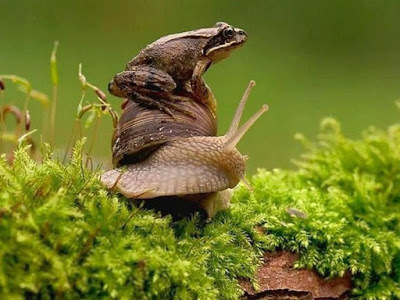
THE WONDERS OF NATURE
G'day folks,
The natural world can be a dangerous and terrifying place, yet sometimes it can also be absolutely hilarious. From frogs hitching rides on snails' backs to pelicans throwing wild beach parties, the image gallery below will show you Mother Nature's lesser-known funny side.

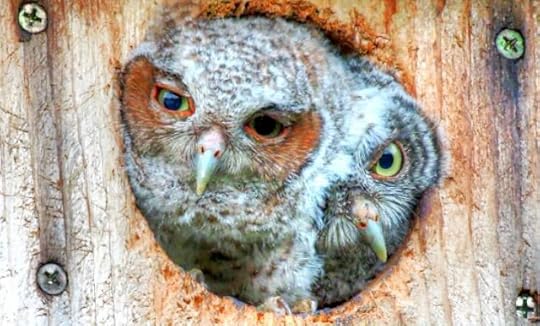


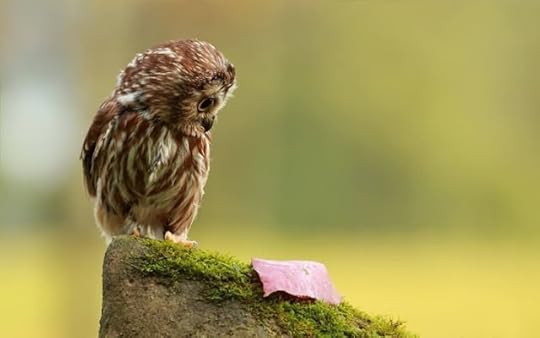
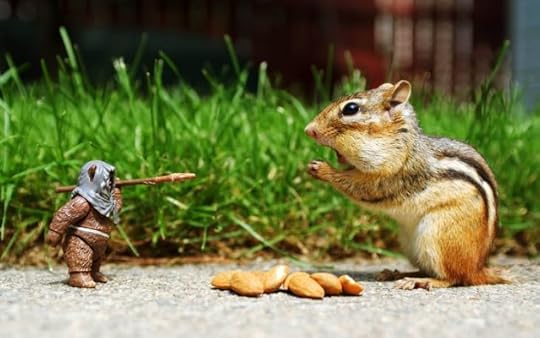









Clancy's comment: Pretty good, eh? Loved the monkeys.
I'm ...
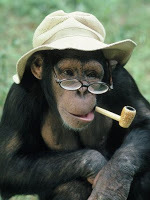

Published on November 25, 2018 12:15
November 24, 2018
25 November 2018 - WILLIAM MUNNS - GUEST AUTHOR
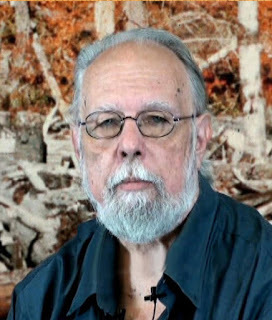
WILLIAM MUNNS - GUEST AUTHOR -
G'day folks,
Today, I interview an author who admires greatness.
Welcome, William ...
TELL US A LITTLE ABOUT YOURSELF AND YOUR WRITING JOURNEY.
I started writing when I was about 13 years old. I was an introverted child spending many hours alone contemplating the ways of nature, life and society. Writing became my way of channeling my thoughts into finite form, by using a story as a vehicle for expressing my answer to a question or my appraisal of an idea I felt was worthy of being recognized. Aside from wildly satirical comedies which allowed me to make fun of the absurdities of life, I tended to gravitate to idealistic stories with admirable characters I wished to exist. More than half a century later, I’m still writing, although the ideas I select to form the basis for my stories have become more personal, more “down to earth”. My inventory of literary works (some published, many still works in progress) are a richly diverse collection of themes, styles, genre and characters. If there is one common thread to them all, it would be that the leading characters are people I admire, and wish to exist.
WHEN AND HOW DID YOU BECOME A WRITER?
I grew up near Hollywood, and neighbors and friends were in the movie industry, so writing movie scripts seemed a natural form for me to pursue. I submitted my first script to a movie studio in 1962 (which was returned unread as “unsolicited”), and another short script won first place in a TV script writing contest when I was a senior in high school (1966). A local newspaper write-up about my win lead to an introduction to the Story Editor of Universal Studios, and that fueled my ambitions to succeed as a writer. But in terms of publication, most of my published work has been scientifically oriented papers and magazine articles. The fictional stories lay dormant until self-publishing became a viable option.
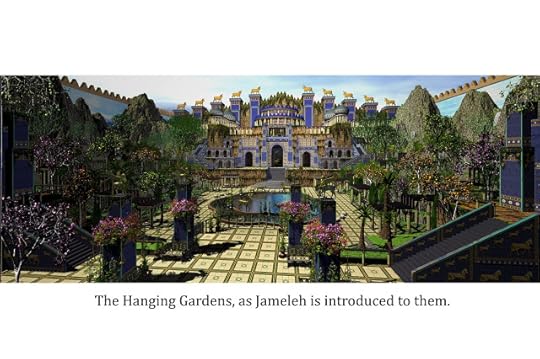
WHAT TYPE OF PREPARATION DO YOU DO FOR A MANUSCRIPT? DO YOU PLAN EVERYTHING FIRST OR JUST SHOOT FROM THE HIP?
My preparation is usually research on the general subject matter, which might be thoroughbred race horses, the U.S. Secret Service, exotic animals kept in private collections, or autism and how people deal with it (as some recent examples). But the story is dictated by pure gut feeling. Sometimes I have an outcome visualized from the very beginning, but occasionally I start with a premise and simply follow the idea as it develops, as if dictated by a muse. My most recent work, “The Life of One With Three Names” was unique in that it began as computer graphic artwork of an archaeological visualization. The story evolved out of a mystery I discovered while researching the historical description of the Hanging Gardens of Babylon.
WHAT DO YOU ENJOY MOST ABOUT BEING A WRITER?
Each story involves places, people and events that are new to me, and so the joy of writing is in the discovery of these people, places, and events. It’s a vicarious experience that expands my own world, just as reading expands the worlds of many. I write books I wish to read.
WHAT IS THE HARDEST THING ABOUT BEING A WRITER?
Occasionally I experience writer’s block, that classic malady that seems to throw a roadblock in our path, and finding the detour around that mental obstruction is, to me, the hardest part. I usually try to challenge my mind and deliberately put myself into a new and unfamilair position, to see from a new perspective, as a solution.
WHAT WERE YOU IN A PAST LIFE, BEFORE YOU BECAME A WRITER?
A child.
WHAT IS YOUR GREATEST WRITING ACHIEVEMENT?
My current book, “The Life of One With Three Names”, is without a doubt my greatest achievement to date, and may likely be for my career. The story was actually a small part of the total challenge, because it is an illustrated book, and I chose to do the illustrations in an ultra-realistic form using computer 3D graphics. So I literally had to build an ancient world in meticulous detail. So in terms of work, this book required more than a decade of diligent effort.
But this book is thematically great as well. The mystery of the Hanging Gardens of Babylon is that the Babylonians themselves fail to even acknowledge that this magnificent royal garden ever existed in their city. Legend has it that the great Babylonian King, Nebuchadnezzar II, built the gardens for his wife and queen, who was homesick for the mountain scenery of her homeland, Mede. But Babylonian histories do not even acknowledge the identity of this wife and queen. And the premise is flawed because the King was a true and undeniably great ruler, so he must have known the merit of a proportional response. One does not give a gift of magnificent proportion to a pitiful cause, and being homesick is a modestly pitiful state of mind, not grand or admirable. So my premise was that the King didn’t build the most incredible royal garden in the history of human endeavor for the woman he loved, simply be cause she was homesick. The King must have built it for her because she was a truly magnificent queen, worthy of this tribute, a proportional response. So my first challenge was to visualize what would make this woman, this queen, great enough as a person to be worthy of inspiring the greatest royal garden in the history of human endeavor.
But once I succeeded in visualizing her greatness, I then had to explain why the Babylonians chose to virtually ignore her greatness and deny her the legacy of her life, as well as deny the existence of the royal gardens built for her. And I am pleased to say that the solution I constructed is elegant and splendidly plausible.
WHAT ARE YOU WORKING ON AT THE MOMENT?
I have several projects in the works, dealing with diverse topics, such as artificial intelligence and the dark net (a Si-Fi story), an unorthodox First Lady who challenges America to see life her way (a comedy), and the follow-up stories of the Hanging Gardens trilogy.

WHAT INSPIRES YOU?
I draw inspiration from many sources, but greatness of character, goodness of intent, and individuality in the face of peer pressure do seem to be frequent inspirational qualities in my writing.
WHAT GENRE DO YOU WRITE?
My writing spans many genre and categories. To me, the inspirational premise is important, and the genre simply is the niche the idea seems to fit best into. But I’m not usually bound by the dictates or formulas of genres. I let the story be an individual, true to itself first and foremost.
DO YOU HAVE ANY TIPS FOR NEW WRITERS?
You must push yourself constantly. Nobody can do that for you.
DO YOU SUFFER FROM WRITER’S BLOCK?
Occasionally, yes. But as I usually have multiple projects in the works, I simply shift to another to make progress, and then re-visit the blocked one down the road, and often I find that my new perspective resolves the block.
DO YOU HAVE A PREFERRED WRITING SCHEDULE?
No. My writing is sporatic, commensutare with my unorthodox life and work in both artistic and technical endeavors.
DO YOU HAVE A FAVOURITE WRITING PLACE?
Anywhere there’s a computer and solitude.
WHAT IS YOUR GREATEST JOY IN WRITING?
The satisfaction when the theme, the characters and the literary form gel into a cohesive gem that sparkles.
WHO IS YOUR FAVOURITE AUTHOR AND WHY?
I don’t actually have a favorite. I’m intrigued by many authors and their varied styles and subjects.
WHAT’S THE GREATEST COMPLIMENT YOU EVER RECEIVED FROM A READER?
I haven’t yet received any comments or feedback that stands out as greatest or worst.
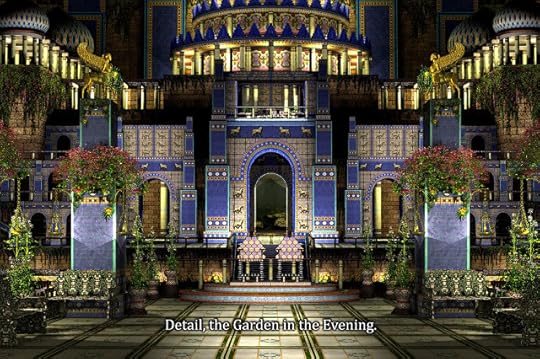
WHAT WAS THE WORST COMMENT FROM A READER?
Same as above.
WRITERS ARE SOMETIMES INFLUENCED BY THINGS THAT HAPPEN IN THEIR OWN LIVES. ARE YOU?
I’m more influenced by possibilities and goals, but I have occasionally written from experience. When I do write from experience, the story usually is a comedy. Not sure why.
OTHER THAN WRITING, WHAT ELSE DO YOU LOVE?
I have an endless love of learning new things, and my appetite for knowledge is boundless.
DID YOU HAVE YOUR BOOK / BOOKS PROFESSIONALLY EDITED BEFORE PUBLICATION?
I do rely on the editorial assistance of a trusted colleague, but I don’t think the process would be described as “professionally edited”.
DESCRIBE YOUR PERFECT DAY.
A day of profound accomplishment.
IF YOU WERE STUCK ON A DESERT ISLAND WITH ONE PERSON, WHO WOULD IT BE? WHY?
It would be a person who knows how to get off the island.
WHAT WOULD YOU SAY IF YOU HAD THE CHANCE TO SPEAK TO WORLD LEADERS?
That would be a book in itself.
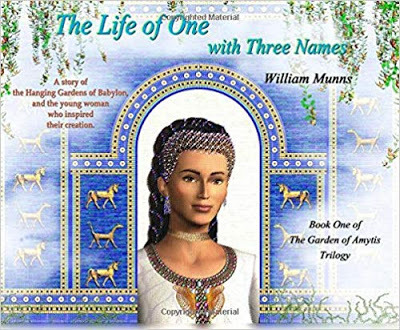
WHAT ARE YOUR PLANS FOR THE FUTURE?
Keep writing, keep working, keep accomplishing things, keep trying to make a difference.
WHAT ARE YOUR VIEWS ON BOOK TRAILERS? DO THEY SELL BOOKS?
No opinion.
DO YOU SEE YOURSELF IN ANY OF YOUR CHARACTERS?
Not usually. But I do see people I admire and wish did exist.
DOES THE PUBLISHING INDUSTRY FRUSTRATE YOU?
It certainly has it’s problems, but I think the self-publishing process has been a major breakthrough in opening the door to worthy writers who couldn’t get past the gatekeepers in the Publishing world.
DID YOU EVER THINK OF QUITTING?
Never.
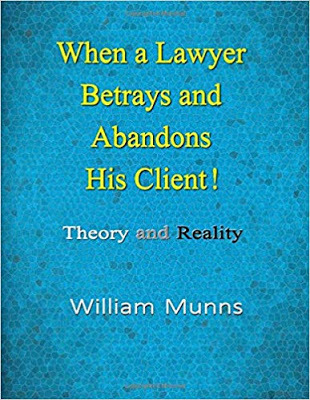
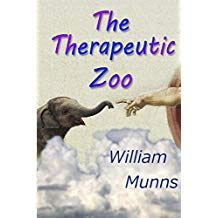
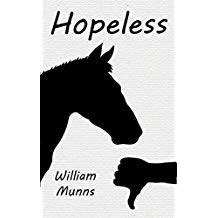
WHAT WAS YOUR FAVOURITE MANUSCRIPT TO WRITE? WHY?
To me, that’s like asking parents which is their favorite child in the family. Each is special in some unique way, and to label one a favorite seems dismissive of the others.
HOW WOULD YOU DEFINE ‘SUCCESS’ AS A WRITER.
When you write books you are confident to leave for others when you pass on.
WHAT SHOULD READERS WALK AWAY FROM YOUR BOOKS KNOWING? HOW SHOULD THEY FEEL?
Depends on the book, but in general, I would hope that any book of mine may give the reader some insight into life, and the hope of a better world.
WOULD YOU LIKE TO HAVE YOUR BOOKS MADE INTO MOVIES? EVER WRITTEN A SCREENPLAY?
As noted above, that’s how I got started, writing stories as screenplays. So I do anticipate or envision most of my stories being made into movies, yes.
HOW MUCH THOUGHT GOES INTO DESIGNING A BOOK COVER?
As I do graphics art myself, I do my own covers. My graphics ideas are different from the norm one would expect from professional graphics designers, but they please me, so I have no regrets. Each cover simply should reflect the essence of the story, in my mind.
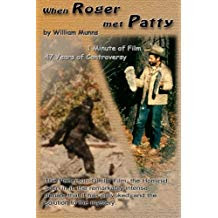
WHAT’S YOUR ULTIMATE DREAM?
To change the world, for the better.
WRITING IS ONE THING. WHAT ABOUT MARKETING YOU, YOUR BOOKS AND YOUR BRAND? ANY THOUGHTS?
Right now, my marketing is low-key, but I hope to ramp up the effort as my resources permit.
ARE YOUR BOOKS SELF-PUBLISHED?
Yes.
DESCRIBE YOURSELF IN FIVE WORDS.
Original, sincere, thoughtful, optimistic, visionary
WHAT PISSES YOU OFF MOST?
Anorexic literature (most often found in movie scripts where “white on a page”, empty space, devoid of words, is glorified.
WHAT IS THE TITLE OF THE LAST BOOK YOU READ? GOOD ONE?
Mostly technical books recently, for work on software programming and deep learning/artificial intelligence. And research reference books for future writing.
WHAT WOULD BE THE VERY LAST SENTENCE YOU’D WRITE?
Not done working, so need more time.
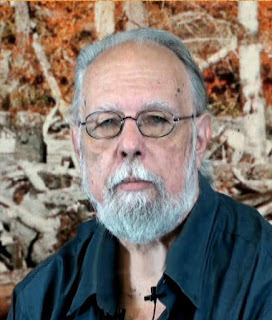
WHAT WOULD MAKE YOU HAPPIER THAN YOU ARE NOW? CARE TO SHARE?
The resources to accomplish all I aspire to do. The sad reality of life is that almost all accomplishments needs some resources as raw material, and one cannot make something out of nothing. I often struggle with more ambition that resources to accomplish those ambitions. I would be happy if the circumstances changed and allow me to accomplish more.
ANYTHING YOU’D LIKE TO ADD?
From “About the Author” in “The Life of One With Three Names”:Finally, I would describe myself as one who admires greatness. I really feel better about being human, and wanting to live life to the fullest, because of great people. Stories of great people give me hope. I think the woman who inspired the Hanging Gardens must have been a great person, and I’ve tried to tell a story reflecting that idea. I wish there were more great people in the world. I think a lot of our worldly conflicts and discord would be resolved if we had more great people. So when I see half of the world’s potentially great people systematically denied the opportunity to fulfill their potential for greatness, because of something as trivial as gender, I am profoundly saddened by that lack of greatness in the world. We all lose.

AMAZON
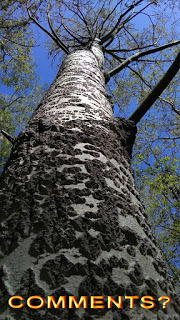
Clancy's comment: Thank you, William. Extraordinary graphics. Well done. Keep being inspired.
I'm ...


Published on November 24, 2018 14:16
November 23, 2018
24 November 2018 - WEIRD STUFF
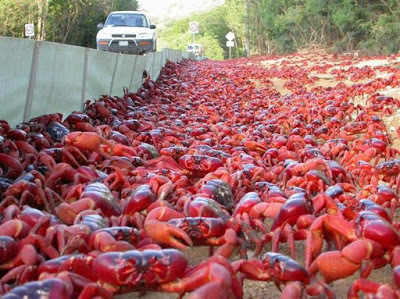
WEIRD STUFF
G'day folks,
Welcome to some weird and interesting stuff I've found on the Internet.



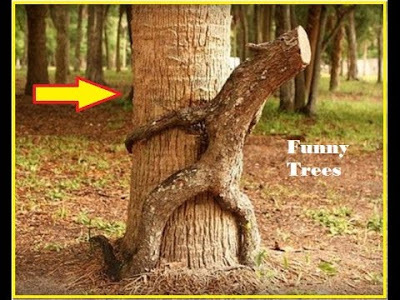







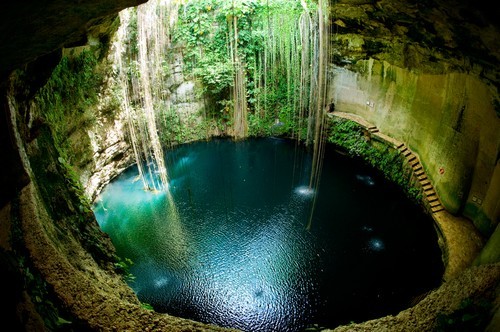

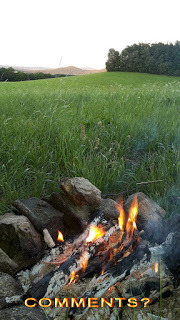
Clancy's comment: There are some great photographs here.
I'm ...
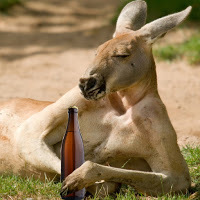

Published on November 23, 2018 12:50
November 22, 2018
23 November 2018 - ADOPT A CHATEAU IN FRANCE
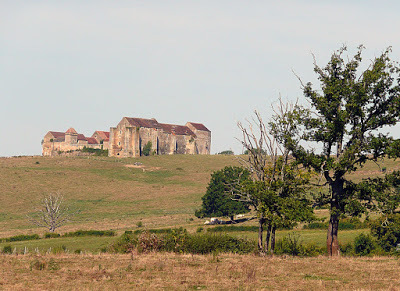
ADOPT A CHATEAU IN FRANCE
G'day folks,
Ever wanted to own a chateau in France?
Adopte un Château is a relatively new association dedicated entirely to saving endangered castles by working with property owners and collectives in their restoration efforts, and connecting them with those who share a passion or expertise in history and heritage (that’s us). France has over 30,000 castles, and sadly a large number of them are abandoned or at risk. Adopte un Château is looking to change that by finding innovative and creative ways to bring them back to life.
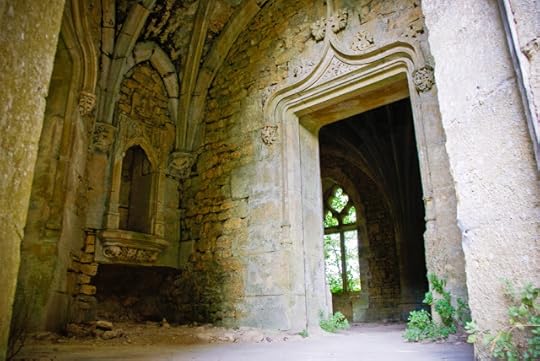
The association recently made some news when it proposed to sell €50 shares in the castle of Saint-Vincent-le-Paluel in Dordogne, being auctioned at the end of this month. In partnership with a heritage crowd-funding platform, Dartagnans, the project allows us to become shareholders of the company that will buy the Chateau if they raise enough money to outbid other buyers at the auction.
As shareholder, you would be part of the castle’s future, making decisions at annual meetings, working with a management board and more– depending on how many shares you buy! Of course, if not enough people buy shares, they won’t be able to raise the money to buy the chateau and all donors will be refunded their share money.
They have 11 days left for this campaign, with over 75% of the project funded so far. If they’re successful, Adopte un Chateau will begin planning the revival of this 15th century sleeping beauty which was tragically torched by the Nazis in World War II.

Made up of a dedicated team of heritage experts, historians, engineers and architects, the guys at Adopte un Chateau are probably our best bet at rescuing even some of the most desperate historical monuments in France, and we can help from as little as €1 a month.
Now, check out some of the properties involved …








Clancy's comment: What a waste, eh? But, there are some great holiday houses here.
I'm ...
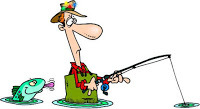
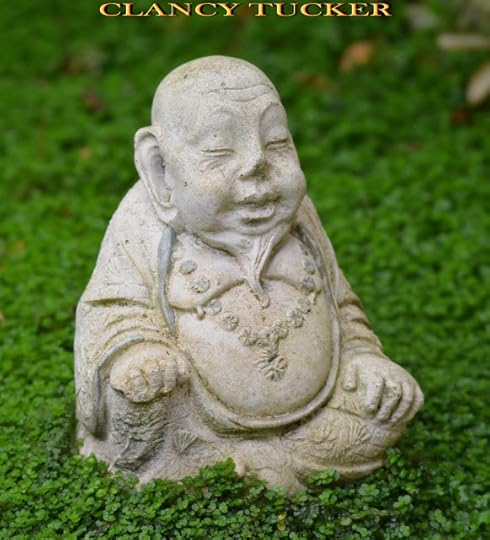
Published on November 22, 2018 11:06
November 21, 2018
22 November 2018 - How Fish and Chips Migrated to Great Britain

How Fish and Chips Migrated to Great BritainG'day folks,We have a pie and sauce, but the Pommies have fish and chips as their national dish. Ever wondered why?
The powerful pairing of fish and chips has long been considered a British staple. Dubbed “the undisputed national dish of Great Britain” by the National Federation of Fish Friers, it’s been enjoyed on the island for over a century, with an estimated 35,000 chip shops in business by 1935. During World War II, Winston Churchill exempted the beloved dish from rationing. Today, “Fish & Chip Friday” is a weekly ritual for Brits ringing in the weekend.
Fish and chips’s origin story, however, is a bit more complex than this nationalist sentiment might imply.

As told by Simon Majumdar in his podcast, Eat My Globe, it all began outside of the U.K., hundreds of years ago. From the 8th to the 12th century, Jews, Muslims, and Christians lived in relative peace in Portugal, known as Al-Andalus under Moorish rule. Sephardic Jews, who likely comprised around 20 percent of the population, were relatively well-respected and held positions in the high court. For this reason, the area became somewhat of a haven for those fleeing the Spanish Inquisition.
However, in 1496, after the end of Moorish rule, King Manuel I married Isabel of Spain, who was not so aligned with the idea of religious freedom. Her ultimatum: Their betrothal would mean the expulsion of Jews from Portugal. Manuel I mandated that all Jews be baptized, or otherwise expelled.

While many fled, some Jews stayed, and either converted to Christianity or pretended to do so while continuing to practice Judaism in secret. But when Portugal fell under Spanish rule, the Inquisition targeted individuals with Jewish lineage, threatening anyone claiming to be a Converso. As religious violence worsened, many fled Portugal and resettled in England, bringing with them culinary treasures founded in Sephardic cuisine—including fish.
Peshkado frito (in Andalusian dialect, pescaíto frito) was one of them. The dish of white fish, typically cod or haddock, fried in a thin coat of flour, was a favorite particularly among Sephardic Jews, who fried it on Friday nights to prepare for the Sabbath, as the Mosaic laws prohibited cooking. Allegedly, the batter preserved the fish so it could be eaten cold, and without sacrificing too much flavor, the following day.
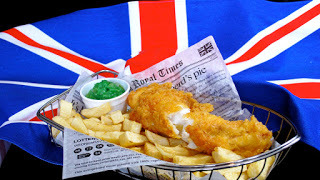
It was a hit. Fish prepared “in the Jewish manner” was sold on the streets of London on any given day. And at the end of the week, eating fish on Friday was a part of religious observance for Jews and Catholics alike—as “fish fasting” to avoid consuming warm-blooded animals has been a part of the Catholic tradition for centuries.* Though both groups were religious minorities at the time, fried fish became a popular secular dish, too.
But the Friday-night tradition was likely chipless until the late-19th century. The general popularity of the potato bloomed late in Europe, and it wasn’t until the late 1800s that the tuber was accepted, due especially to the promotional efforts of a French scientist. Though there are several theories of how the potato came to England—and how it became the “chip” we know and love today—one historical account credits a tripe vendor by the name of Mrs. “Granny” Duce with selling the first fried cut potatoes to the public.
There are also competing theories about who created the pairing of, as Churchill called them, “good companions.” Most trace it back to the early 1860s, when Joseph Malins, a Jewish immigrant, opened up a fish and chips shop in London. Others point to John Lee, a man living outside of Manchester, who ran a “chipped potato” restaurant that sold the beloved pairing.

Whether the winning combo was first slapped together by John or Joseph or someone else entirely, it soon became everybody’s dish. British natives and immigrants alike began slathering their cod in batter and frying up husky chips. Industrialization in the 19th and early 20th centuries launched the fish dish to even greater heights, as it became a favorite for factory and mill workers in London and beyond. And while its religious connotations are hidden today, many admirers remain devoted to the beloved international, national dish.
 Clancy's comment: When I lived in London in the 70's, every meal had chips and peas, even if it was a curry. I'm ...
Clancy's comment: When I lived in London in the 70's, every meal had chips and peas, even if it was a curry. I'm ...
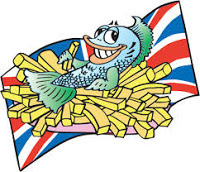

Published on November 21, 2018 12:15



